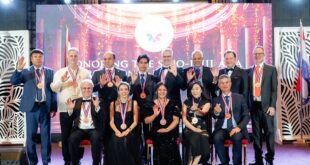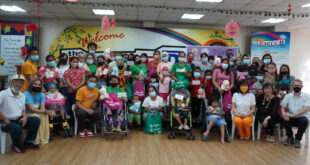By Christopher Cottrell// Images: Peace Post Staff
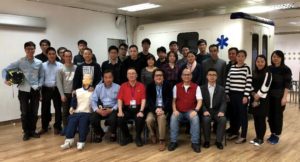
The 41st Sino Luso International Medical Forum the past few days in Macao brought together some of the finest China based medical minds to tackle trauma management and assessment—from the Faculty of Health Sciences at the Macau University of Science and Technology (MUST) tonPeking University People’s Hospital to Hong University, among others. It was timely titled, “Improving Trauma Management and Assessment.”


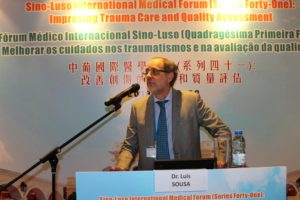
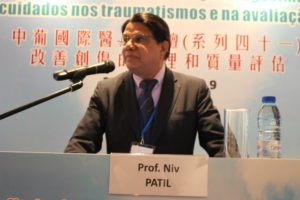
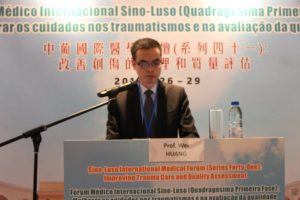
In fact, the opening of the Hong Kong-Zhuhai-Macao bridge, and Greater Pearl Bay Area integration benchmarks with Macao’s mandate to be a World Center for Tourism and Leisure, mean more medical demands will arise to safeguard the population—and these doctors are readying for it now.
Friday night at Clube Militar saw 150 frontline healthcare providers listen to lectures by leading medical thinkers such as Professor Niv Patil Consulting Doctor to the Faculty of Medicine The University of Hong Kong, Dr. Luis Sousa Member of the Portuguese Medical College of Surgery & Portuguese Society of Senology, and Doctor Paula Pimenta, a Member of Portuguese Society of Internal Medicine.
“We’re working very hard every day to address the challenges Macao is facing as a society for its healthcare need. Its nice we can meet like this engage doctors from across the Macao, Hong Kong and China,” says Dr. Pimenta.
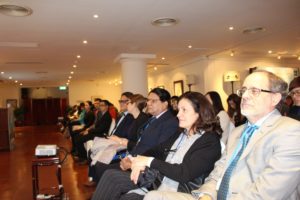
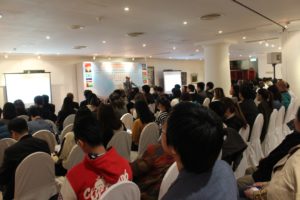
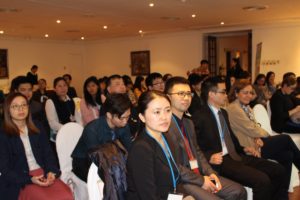
Both Typhoon Hato and a tragic death at the last Grand Prix have magnified issues of increasing emergency responders and doctors for stronger trauma management and assessment.
Prof. Niv Patil , Consulting Doctor to the Faculty of Medicine The University of Hong Kong, explained that a local medical school would aid Macao for challenges to trauma care in the coming years. At present there is no medical school in Macao despite widespread calls from local healthcare academia and society.
Prof. Patil said, “What you have on a syllabus and what you need for trauma care matter a lot. With them, local staff can run the program themselves. The American college doesn’t come down to train them, its normal faculty that does. You can train your own people—do the training of the trainers first. Then they handle the rest of the group and set up a hospital that speaks English and Putonghua.”
Prof. Patil continued, “You can create all kinds of scenarios in the simulation curriculum. You can write you own syllabus. Scenarios such as laproscopic surgery, for example. You can also have videos of real life trauma cases in real time. Some simulation training programs now equip ambulances with cameras, and they catch everything. We picked up some of the videos from them for the students to study, analyze and consider in the simulation scenarios. Using animals is very complicated with licensing and animal welfare inspectors and they will say, “Your pig does not look happy.’”
Dr. Billy Chan, Vice President of the Sino Luso International Medical Forum, added to the further importance of the latest medical education techniques to reduce error and save lives, saying, “Even at Harvard they have simulation therapy, pumping the blood to simulate someone bleeding profusely. They use fake blood and many things to make it as real as possible for students to visualize and react.”
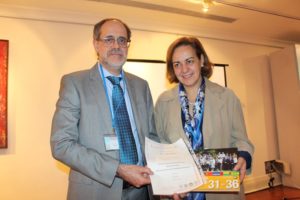
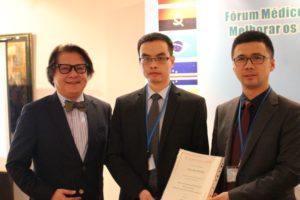
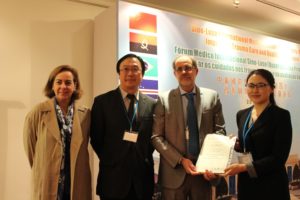
Dr. Chan also said, “Even in Australia, at the last project I worked on in Perth, we had a very good simulation center. Even to get one pig, we could only get one pig in a year! Because the animal rights people are so strong. So simulation was very important there. In Macao we can’t have an animal lab but we can use simulation. The undertaking is not small. You need to tailor it to the city—like Macao has car racing so increasing trauma care here is important. There used to be more construction accidents when they were building up the Cotai Area, with people falling from heights.”
Accidents like that have dissipated write large in Macao since 2013, according to several Macao government hospital doctors.
Indeed, many of Macao’s finest doctors were on hand from across the healthcare spectrum, especially the government hospital and local medical associations. They included Dr. Luis Sousa, a Member of the Portuguese Medical College of Surgery & Portuguese Society of Senology, and Dr. Tam Fei Chang, Council Member Macau Society of Emergency and Critical Care Medicine
Doctors from Beijing included Professor Wei Huang, Attending Doctor of Trauma Center, Peking University People’s Hospital, Dr. Weiping Liang, Emergency Physician, The People’s Hospital of Xiangzhou District, Ms. Libing Sun, Deputy Chief Nurse of Trauma Center, Peking University People’s Hospital, and Dr. Yajun Zhang, Associate Chief Physician of Trauma Center, Peking University People’s Hospital. Dr. Lan Yao, Deputy Director, the 5th Affiliated Hospital Sun Yat Sen University of Guangzhou also attended.
Other Greater Pearl Bay Area doctors from Hong Kong included Mr. Bruce Wai Chung Tam, Operations Manager, Grace Healthcare Limited, Ms. Sui Ting Wong, External Examiner, Caritas Community & Higher Education Service, Hong Kong, Dr. Wai Kwong Poon, Professional Consultant of A&E Medicine Academic Unit, The Chinese University of Hong Kong, and Professor Roger Kwok Wai Ng, Dean of the Hong Kong College of Professional Care.
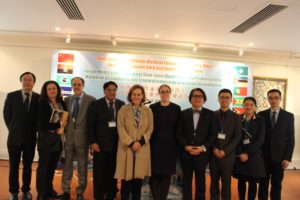
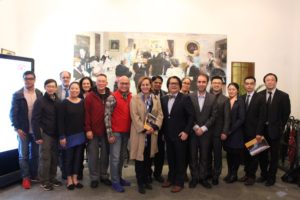
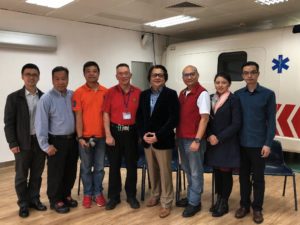
During the two days of simulation training and assessment that took place at the Faculty of Health Sciences at MUST on Saturday and Sunday, trauma teams practiced airway management as well as limb trauma—quite common in Macao because of motorbike accidents.
One trainer, Dr. Ng explained on Saturday, “Basically they are learning how to visualize the throat chords well” in one room dedicated to airway management techniques. This is key for patients who suffer from drowning, for example. The primary victims from Typhoon Hato, for example, had drowned whilst trying to retrieve their cars from underground garages that were flooding.
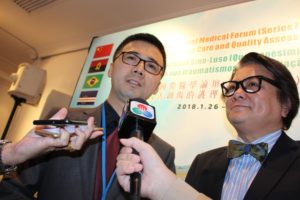
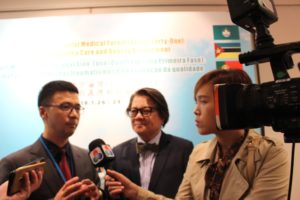
Staying technical with why airway management matters, he said, “Sometimes they put the blade (of a passage clearing apparatus) to deep in the throat so they block the airway. They need to visualize and have hands on experience with the apparatus and the vocal chords. Sometimes they really don’t understand the blade, you have a short blade and long blade. Different patients have different anatomy, some patients have a bigger tongue, others have smaller tongues. It depends on how deep your blade maneuvers. This is an element that is the most difficult for them, so they use simulation to master it.”
Dr. Ng noted, “If they are using this technique, that means the patient has a lot of problems breathing. Take a drowning patient for example with water in their alveolis. This is a difficult challenge for medical students to address in these techniques, so it takes a lot of repetition.”
Dr. Ng added, “Today we practice and tomorrow we use the skills stations again and add new challenges and scenarios. For example, we have a scenario based skills station for testing them. We have one station where a doctor is handling a drowning patient on the beach. They need to test their processual thinking and critical thinking. Another example: if there are trauma patients from car racing with the throat full of bloat, how would the doctors respond with clearing the airway by the ABC (airway, breathing and circulation), then expose then check vital signs. This is what we call protocol.”
Added Prof. Patil in the shared sentiments for a local Macao medical school, “Even in Tonga, a tiny island nation with 150,000 people, has a medical school. Why can’t Macao?”
There’s certainly no shortage of students from China to serve excellent medical education to as part of Macao’s mandate to diversify is economy.
 Peace Post Asia Healthier News For The World
Peace Post Asia Healthier News For The World
